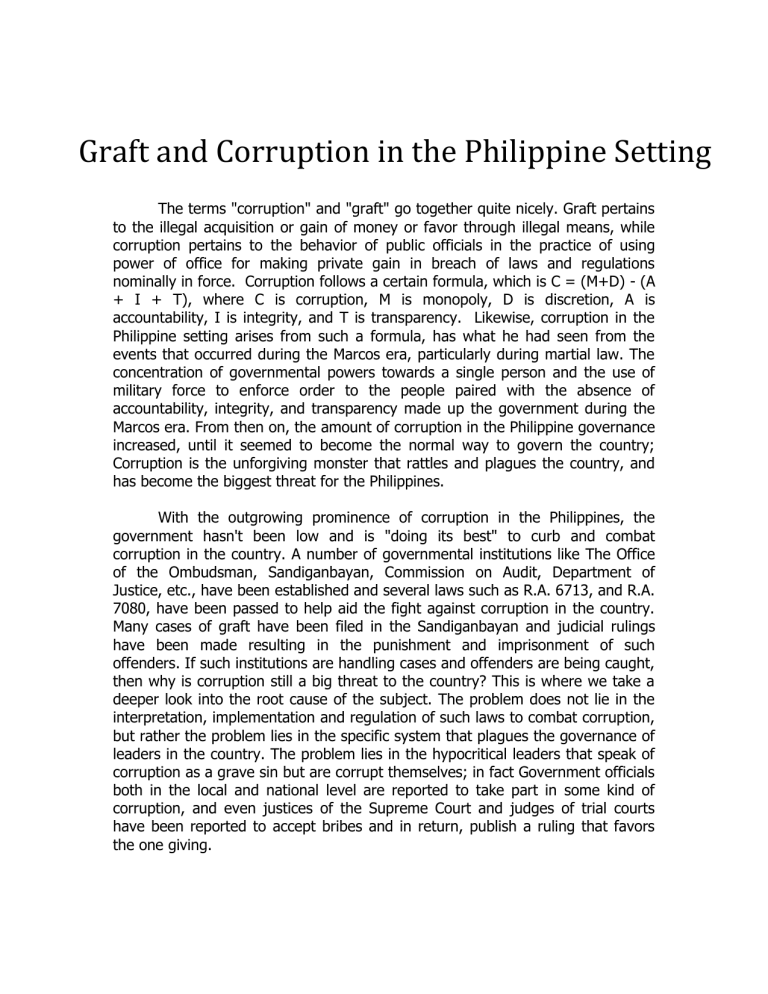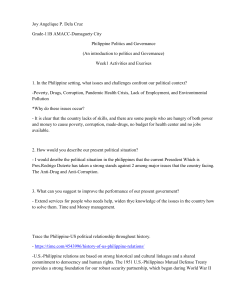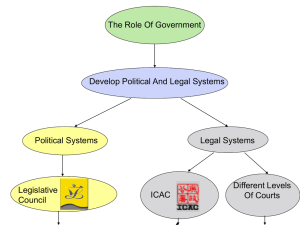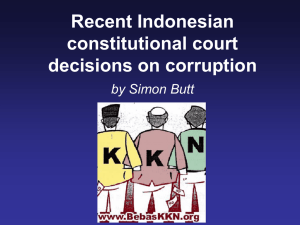
Graft and Corruption in the Philippine Setting The terms "corruption" and "graft" go together quite nicely. Graft pertains to the illegal acquisition or gain of money or favor through illegal means, while corruption pertains to the behavior of public officials in the practice of using power of office for making private gain in breach of laws and regulations nominally in force. Corruption follows a certain formula, which is C = (M+D) - (A + I + T), where C is corruption, M is monopoly, D is discretion, A is accountability, I is integrity, and T is transparency. Likewise, corruption in the Philippine setting arises from such a formula, has what he had seen from the events that occurred during the Marcos era, particularly during martial law. The concentration of governmental powers towards a single person and the use of military force to enforce order to the people paired with the absence of accountability, integrity, and transparency made up the government during the Marcos era. From then on, the amount of corruption in the Philippine governance increased, until it seemed to become the normal way to govern the country; Corruption is the unforgiving monster that rattles and plagues the country, and has become the biggest threat for the Philippines. With the outgrowing prominence of corruption in the Philippines, the government hasn't been low and is "doing its best" to curb and combat corruption in the country. A number of governmental institutions like The Office of the Ombudsman, Sandiganbayan, Commission on Audit, Department of Justice, etc., have been established and several laws such as R.A. 6713, and R.A. 7080, have been passed to help aid the fight against corruption in the country. Many cases of graft have been filed in the Sandiganbayan and judicial rulings have been made resulting in the punishment and imprisonment of such offenders. If such institutions are handling cases and offenders are being caught, then why is corruption still a big threat to the country? This is where we take a deeper look into the root cause of the subject. The problem does not lie in the interpretation, implementation and regulation of such laws to combat corruption, but rather the problem lies in the specific system that plagues the governance of leaders in the country. The problem lies in the hypocritical leaders that speak of corruption as a grave sin but are corrupt themselves; in fact Government officials both in the local and national level are reported to take part in some kind of corruption, and even justices of the Supreme Court and judges of trial courts have been reported to accept bribes and in return, publish a ruling that favors the one giving. One such event that comes to mind when I think about the lack of competence, transparency, and the amount of corruption that roams around the Philippine government is the impeachment of former Chief Justice Renato Corona. During the 44-day trial, the defense has made strong claims as to why the accused is innocent, citing every error of the prosecution. On the last day of the trial, Renato Corona was pronounced guilty, with a 20-3 senatorial vote. In 2015, reports have been made and a controversy regarding the decision bombarded news outlets in the Philippines. The alleged controversy claims that the senators that voted to convict Renato Corona had received bribes from the incumbent Philippine President at the time, Benigno "Noynoy" Aquino III himself. Prior to the trial, Aquino and Corona had engaged in a conflict, which provided a resolution for the bribery to happen. Death came to Corona in April 2016, without a proper trial and confirmation of the verdict amidst the controversy. As of writing, Corona is still convicted guilty, but the controversy remains. The 44day trial, as preceded by corrupt officials was clearly indefensible and unjust, and without a proper trial to address such controversy, his innocence is as clear and compelling as the malice and guilt of his congressmen-accusers and senatorjudges. The doubt and uncertainty in the ruling of this case, even going as far as twisting the law and the system to which it belongs to goes to show just how much corruption is crippling the Philippine government. The problem lies on the system, and if the system itself is flawed, can we even hope to change the government and finally eradicate corruption? The fight against graft and corruption does not lie only in the hands of our leaders. Don't get me wrong, leadership is a keen component in fighting such a monster, but when the leaders themselves are harboring these monsters, the fight now shifts into our own hands. We, the citizens of the Philippines make up the society and the sovereignty of the Philippines - not our leaders and not our government alone, but us collectively. We have the capability to bring change; we have the capability to fight this monster with our bare hands. By demanding fairness, not just from others, but from ourselves. By insisting that we fall in line even when we can go ahead. By refusing special treatment that goes against the law, no matter how much it works for our benefit. By having the courage to speak up, not turning a blind eye on injustices and unfairness. By having the courage to fight for the Filipino people. The 1987 Philippine Constitution favors the citizens because it was made for us. The law was not made for corrupt officials and government to take over, but the law was made for the Filipino people. We should demand a fair, just, transparent, responsible and accountable government because we, as citizens of the Republic of the Philippines, have the right to be free from the chains that imprison us in our very own country - the chains of corruption. The law is for us, and the fight is on us - the future of eradicating corruption in the Philippines lies on our hands.


